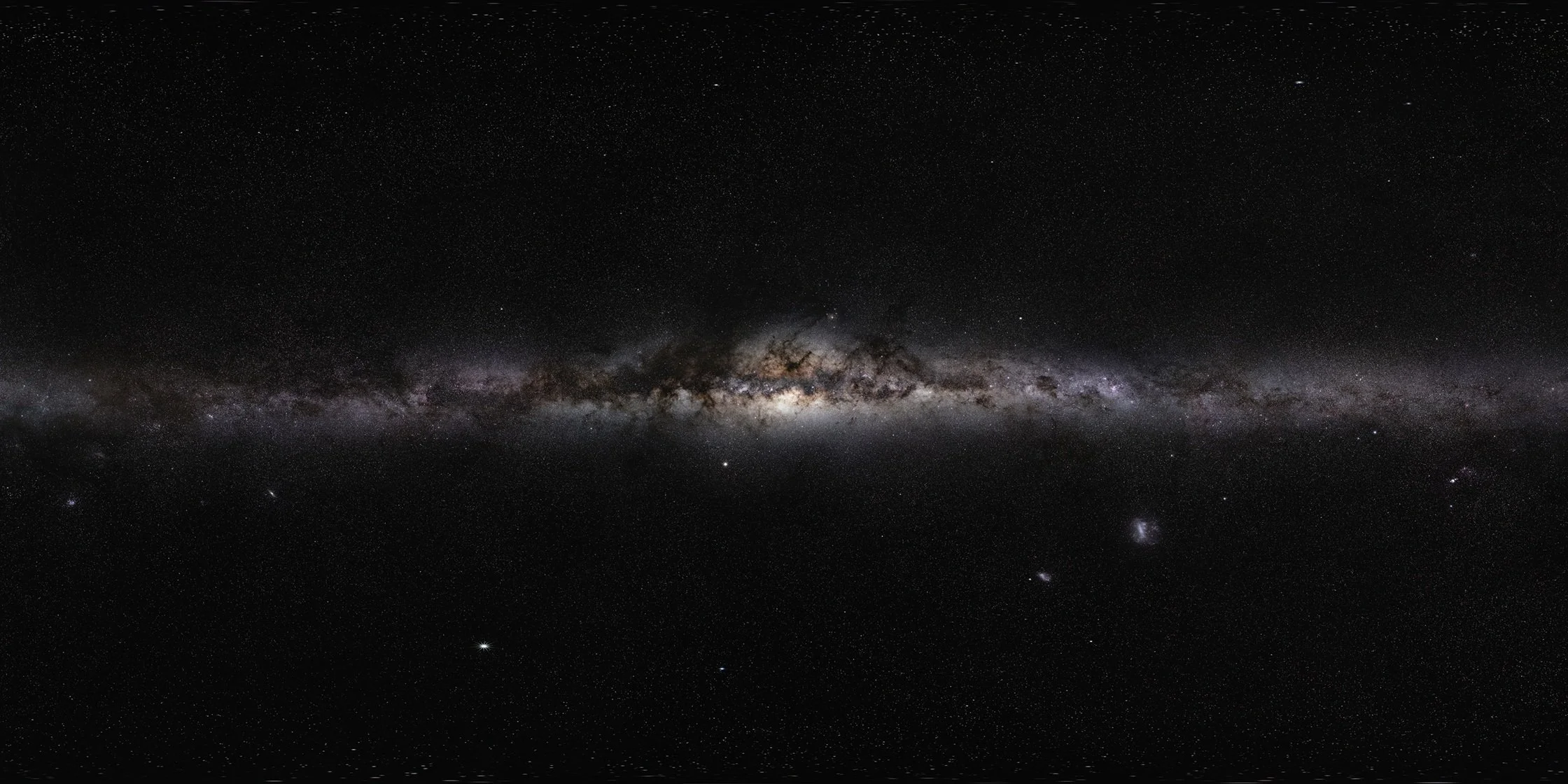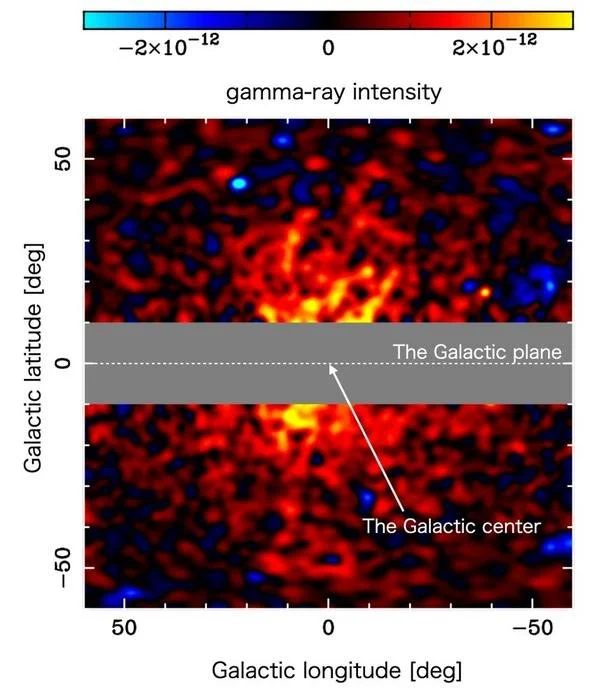For nearly a century, astronomers have been convinced that most of the universe is made of something we can’t see. This invisible “stuff” seems to glue galaxies together and shape the cosmos, yet it doesn’t shine, reflect, or block light.
Now, fresh analysis of data from a NASA space telescope suggests we may have caught our first real glimpse of it, not directly, but through a very specific kind of high-energy light coming from the heart of our own Milky Way.
If this result holds up, it could tell us what dark matter is actually made of. But before we jump to conclusions, it’s worth slowing down and asking: What exactly did astronomers find, why is it so interesting, and what still needs to be checked?
The plane of our Milky Way Galaxy, seen edge-on from our perspective on Earth - (Credit: ESO/S. Brunier)
The Strange Stuff That Keeps Galaxies From Flying Apart
Back in the early 1930s, Swiss astronomer Fritz Zwicky noticed something odd. The galaxies he was studying were moving so fast that, based on the mass he could see, they should have torn themselves apart long ago. The only way to explain it was to assume there was extra, invisible mass creating extra gravity — what we now call dark matter.
Since then, many independent observations have pointed to the same conclusion: galaxies and galaxy clusters contain far more mass than we can account for with stars, gas, dust, and planets. Dark matter appears to act like a hidden scaffolding that helps hold galaxies together and guides how large structures in the universe form.
But there’s a catch. The particles that seem to make up dark matter don’t interact with light. They don’t absorb it, emit it, or reflect it. That’s why we can’t see dark matter directly through ordinary telescopes. Instead, scientists have had to infer its presence from its gravitational effects — how it bends light from distant objects, how galaxies rotate, and how clusters of galaxies move.
So if dark matter doesn’t interact with light, how could we ever hope to “see” it?
Gamma Rays, WIMPs, and a Signal from the Milky Way
One leading idea is that dark matter might consist of weakly interacting massive particles, often shortened to WIMPs. These hypothetical particles would be heavier than protons but would rarely interact with normal matter.
Here’s the key part: in many theories, when two WIMPs collide, they can annihilate each other and produce other particles — including gamma rays, which are very high-energy forms of light. Those gamma rays could be picked up by telescopes in space.
Astronomers have therefore spent years looking for this type of gamma-ray signature in places where dark matter is expected to be densest, such as the centre of the Milky Way, the halos surrounding galaxies and small “dwarf” galaxies orbiting the Milky Way
Using data from NASA’s Fermi Gamma-ray Space Telescope, Professor Tomonori Totani from the Department of Astronomy at the University of Tokyo has taken another close look at gamma rays coming from around the Galactic centre.
Totani reports that he has identified a component of gamma-ray light that appears to form a halo-like structure around the Milky Way’s centre, matching what we’d expect from a dark matter halo. As he explains:
“We detected gamma rays with a photon energy of 20 gigaelectronvolts (or 20 billion electronvolts, an extremely large amount of energy) extending in a halolike structure toward the centre of the Milky Way galaxy. The gamma-ray emission component closely matches the shape expected from the dark matter halo,” said Totani.
This pattern becomes clearer when you look at the gamma-ray map researchers constructed from the data
Gamma-ray intensity map showing the halo component around the center of the Milky Way over a span of about 100 degrees. The horizontal gray band marks the Galactic plane, which was masked out in the analysis to avoid contamination from strong astrophysical radiation in that region. - (Credit: Tomonori Totani, The University of Tokyo)
The energy spectrum (essentially the pattern of how intense the gamma rays are at different energies) also lines up with predictions for WIMP annihilation. In this scenario, the WIMPs would have a mass about 500 times that of a proton.
According to the study, even the estimated rate at which these WIMPs would be annihilating is consistent with existing theoretical expectations. And crucially, this particular gamma-ray feature is not easy to explain by more familiar astrophysical sources, such as normal stars, gas clouds, or known types of high-energy objects.
Why Astronomers Are Excited (and Still Cautious)
Totani’s study, published in the Journal of Cosmology and Astroparticle Physics, argues that the most natural explanation for the observed gamma rays is dark matter. In his words:
“If this is correct, to the extent of my knowledge, it would mark the first time humanity has ‘seen’ dark matter. And it turns out that dark matter is a new particle not included in the current standard model of particle physics. This signifies a major development in astronomy and physics,” said Totani.
That’s a big claim, and the astronomy community will want to test it thoroughly. According to Totani, other teams will need to carry out independent analyses of the same Fermi telescope data to see whether they arrive at the same result.
Even if they do, scientists will still look for additional evidence that this halo-like gamma-ray signal truly comes from dark matter annihilation and not from some other, as-yet-unknown astrophysical process. One promising way to do this is to check other places where dark matter should be concentrated.
For example, detecting gamma rays with the same energy from small, dark matter–dominated dwarf galaxies in the Milky Way’s halo would be a strong supporting clue. Totani notes that this might become possible as more data from Fermi and other instruments accumulates in the coming years:
“This may be achieved once more data is accumulated, and if so, it would provide even stronger evidence that the gamma rays originate from dark matter,” said Totani.
So have we truly seen dark matter at last? The answer is: maybe. The new study offers a detailed and intriguing piece of the puzzle, but science moves carefully. For now, we have a highly suggestive signal, a theory that fits it well, and a clear path for how to test it further — all signs that the long hunt for the universe’s missing matter might be entering an especially interesting phase.
If you are interested in more details about the underlying research, be sure to check out the paper published in the Journal of Cosmology and Astroparticle Physics, listed below.
Sources, further reading and more interesting articles on the subject of Space & Exploration:
If the Universe Is Expanding, What Is It Expanding Into? - (Universal-Sci)
Remarkable Find: Second-Ever Planet Forming Around a Sun-Like Star - (Universal-Sci)
Could we actually reach a black hole with a paperclip-sized spacecraft? - (Universal-Sci)
20 GeV halo-like excess of the Galactic diffuse emission and implications for dark matter annihilation - (Journal of Cosmology and Astroparticle Physics)
Too busy to follow science news during the week? - Consider subscribing to our (free) newsletter - (Universal-Sci Weekly) - and get the 5 most interesting science articles of the week in your inbox
FEATURED ARTICLES:







